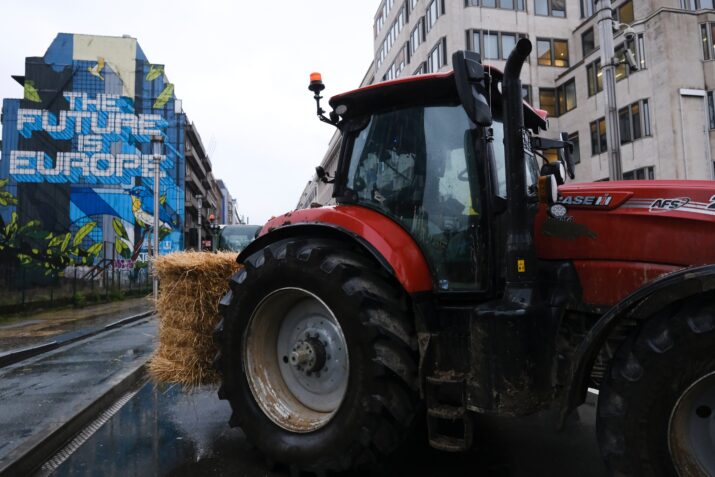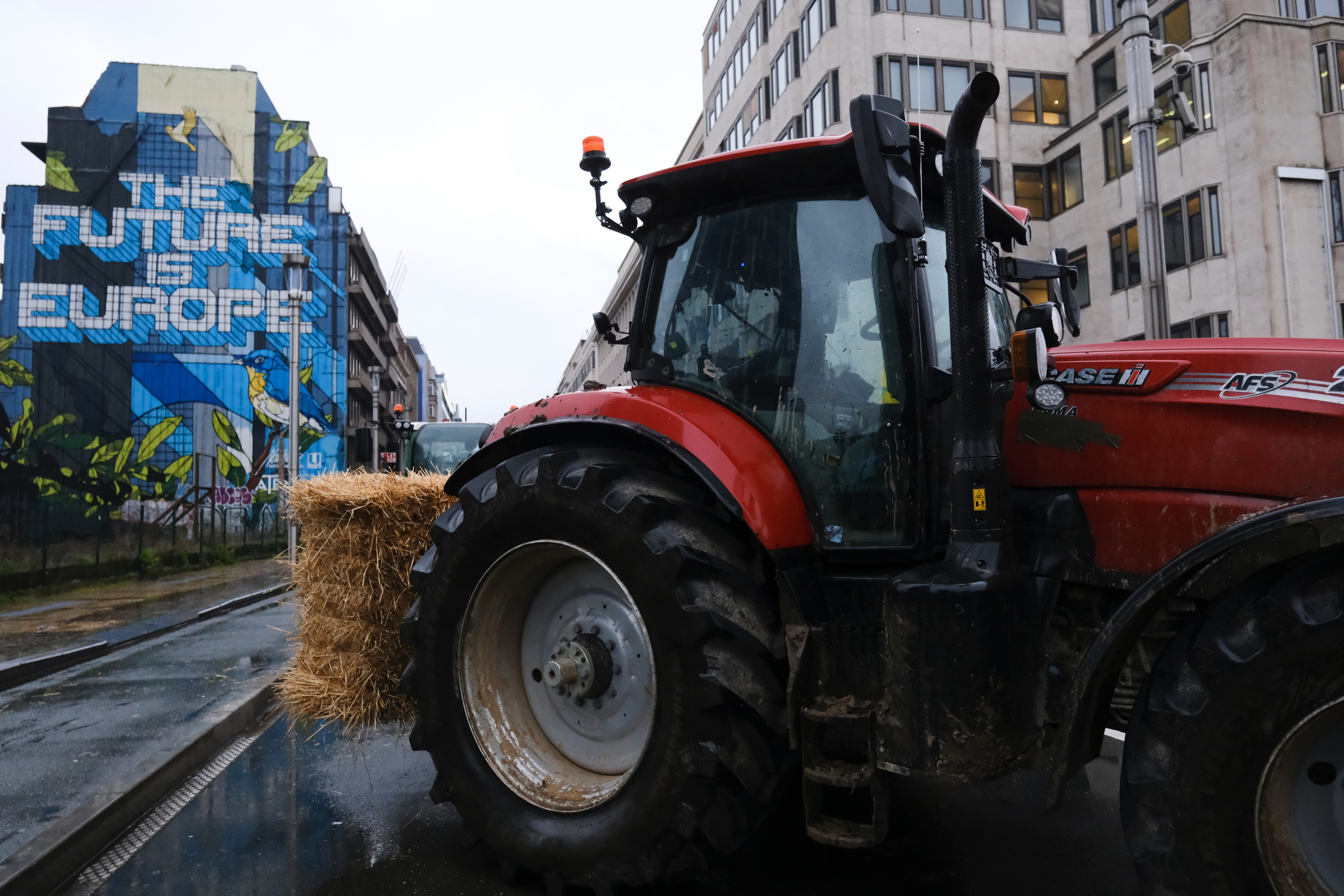

The elections to the European Parliament in June 2024 resulted in important changes in its political composition. Conservative and right-wing political groups gained seats at the expense of the liberal and green political groups. These trends are also reflected in the composition of national governments represented in the European Council and the Council of Ministers—the latter sharing legislative authority with the Parliament. Nonetheless, the new Parliament has again confirmed Ursula von der Leyen as the president of the next Commission based on a coalition of centrist forces—the center-right European People’s Party (EPP), the center-left Socialists and Democrats (S&D), the liberal Renew, and the Greens—that largely formed her majority in the last political cycle. Von der Leyen’s Political Guidelines,[i] as she presented them to the European Parliament when seeking approval for her nomination, were clearly oriented toward cementing her support from this centrist coalition.
Her re-appointment as Commission President may give the appearance of business as usual in the European Union for the coming 2024-2029 political cycle, but under this veneer of stability there are pressures for change that should not be underestimated. The political priorities set out by von der Leyen as she sought support for her nomination on this latest occasion are subtly different from the Green Deal platform she used to seek support in 2019. This nuance also applies in the area of agrifood policy, which has been marked by protests and policy reversals during the last year of her previous mandate.
The battlelines in future agricultural policy
The potential significance of the rightward swing in both the Parliament and Council for agrifood policy can be assessed by sketching the main areas of contention. Future agrifood policy will be argued along seven major axes that significantly complement each other and overlap.
The first axis involves balancing the pursuit of farm income and environmental objectives in the Common Agricultural Policy (CAP). This consideration was the focus of much of the recent debate about the ambition and speed of implementation of the European Green Deal in the agrifood sector. The last CAP reform required that member states’ CAP Strategic Plans should show increased environmental ambition.[ii] This requirement was supported by significant innovation[iii] in the legislative framework underpinning the CAP. Whether the next CAP—covering the period 2028-2034—will continue in this direction or reverse course remains to be decided.
A second axis concerns the purpose of farm income support. Is it intended principally to support the income of small-scale, marginal farms that practice less intensive agriculture, so as to maintain farm numbers and slow down the pace of farm consolidation, or is it primarily intended to support productive farming by facilitating investment and offsetting the cost of higher standards and thus, in the view of its proponents, contribute to food security? This axis relates to the extent to which the redistribution of direct payments initiated in previous CAP reforms will be continued or intensified.
A third axis considers the balance between market orientation and market management in pursuing the farm income objective, once this latter is set. The market orientation followed by the CAP since the 1992 reform lowered guaranteed floor prices to safety net levels while supporting farm incomes through budgetary payments. There are increasingly loud voices calling for a return to higher guaranteed prices, which would require greater government intervention in agricultural markets, for example through purchasing, border protection, supply controls, and contract obligations. The proposal that producer prices should be set based on actual costs of production rather than by market forces alone is already enshrined in French legislation (though hardly effective), and President Macron has proposed that this approach should be extended to the Union as a whole. The outcome of this debate will also have implications for the role foreseen for market-based instruments in helping farmers to manage risks associated with market volatility, weather, pests, and diseases, although it is clear that the scale of damages from ongoing climate change-related events will call for increased public resources.
A fourth axis relates to the question of who should pay for environmental improvements. Should farmers be subject to the polluter pays principle, implying that they should bear the cost of reducing negative environmental impacts, whether through regulation or market-based instruments? Or should it be the responsibility of society to incentivize farmers by paying them sufficiently to make these improvements on a voluntary basis? In the real world, the question is not so black and white, not least because some of the practices that minimize environmental damages may also be associated with positive environmental outcomes, for which society is ready to pay. For example, organic farming avoids the use of chemical fertilizer and pesticides that contribute to water pollution and loss of biodiversity while at the same time helping to build and store soil carbon. But it remains an open question how best to combine both sanctions and rewards to transition to a more sustainable agriculture.
A fifth axis relates to whether agrifood trade policy should promote openness or protection. Discussions on this topic in the previous political cycle focused on free trade agreements—particularly with countries that are significant agricultural exporters, such as Australia, Canada, or the Mercosur bloc—as well as on the unilateral trade concessions granted to Ukraine. The introduction of reciprocity in import standards (“mirror clauses”) was also a hot topic. In the next political cycle, these issues will continue to be relevant, while the question of the accession of new members, and especially Ukraine, will loom larger.
The sixth axis concerns budgetary issues—both the size of the overall EU budget and the size of the budget allocated to the CAP. We already know there will be new requirements for additional spending by the EU budget in the next Multi-Annual Financial Framework (MFF) to repay the amounts borrowed to support the Next Generation EU package introduced to help countries recover from the COVID-19 pandemic, to assist member states with the decarbonization of their energy systems and industrial processes, and to pay for increased spending on defense and security, among other issues. Countries that oppose an increase in the MFF ceiling are almost certainly implicitly also arguing for a corresponding cut in the CAP budget. Here, member states constitute the key actors, as the decision on the MFF ceiling is taken by the European Council, although the final MFF conclusions must also be approved by the Parliament. Put alternatively, the CAP budget can be maintained, let alone increased, only if there is agreement to significantly increase the MFF ceiling.
The seventh axis relates to food policy and the extent to which governments are prepared to intervene in the diet choices of consumers to tackle both the adverse health impacts of current consumption patterns (especially the role of ultra-processed foods) and the environmental impact of the food system (here the focus is on the role of livestock products in consumer diets). The EU and member state governments recognize the scale of the challenges but have so far been reluctant to move much beyond providing consumer information—for example, through dietary guidelines—and entering into voluntary agreements with the food industry to reduce the content of salt, sugar, and other harmful ingredients. The attempt to introduce nutrition labelling has become mired in controversy, and to date there has been little appetite for more interventionist measures. The proposed Commission initiative on sustainable food systems in the previous political cycle was eventually withdrawn. But the growing social costs of our food system mean that the issues of consumption and nutrition cannot be ignored.
Implications of the European Parliament election outcome for the Common Agricultural Policy
The rightward shift in the center of gravity in both the Parliament and Council has consequences for the eventual EU policy position on each of these axes and thus the future direction of CAP reform. I expect this shift to favor the concern for farm income over the pursuit of environmental objectives, a preference for small and local production—also supported by those in the green and left political groups—a more voluntary approach to tackling environmental challenges based on carrots rather than sticks, more market management—also supported by some on the left—less openness to trade—also supported by the green and some of the political groups on the left—and less willingness to address the power of the food industry, due to the belief that governments should not interfere with consumers’ right to choose.
EU enlargement is a contested topic on the right, with the center-right and some far-right groups strongly in favor and others vehemently opposed to it. The budget axis is also an open question. There is an obvious tension among those conservative and far-right groups—but not only—that are opposed to further increases in the EU budget in the name of defending national sovereignty while at the same time demanding more support for farmers, which would require increased resources for the CAP.
Some clues have already emerged as to the future direction of policy in von der Leyen’s Political Guidelines. In general terms, she recommitted herself to the European Green Deal and to the support of a climate policy that aims for a 90 percent reduction target in net emissions by 2040 as the pathway to net zero emissions by 2050. Her focus has shifted to implementation, and she now views the Green Deal more through the lens of industrial policy, as she promised to launch a Clean Industrial Deal in the first 100 days of her new mandate. In itself, this is a sensible switch, as such policy puts the emphasis on the positive merits of the decarbonization agenda and its potential to create good jobs in the green tech industries that drive this transition. However, von der Leyen has not spelled out the implications of the 90 percent net emission reduction target for agriculture.
The section on agriculture in the Political Guidelines starts with the customary nod to Europe’s farmers for their contribution to the supply of healthy and high-quality food. Von der Leyen accepts that farmers and rural areas are under pressure “from the impact of climate change to unfair global competition, higher energy prices, a lack of younger farmers and difficulties in accessing capital.” She then makes six specific commitments intended to “show that Europe will protect its own food sovereignty and those who provide for us all”:
- To build on the recommendations of the Strategic Dialogue for Agriculture to “present a Vision for Agriculture and Food in the first 100 days looking at how to ensure the long-term competitiveness and sustainability of our farming sector within the boundaries of our planet”;
- To defend an EU income policy for Europe’s farmers as “it is vital that farmers have a fair and sufficient income. They should not be forced to systematically sell their products below production costs”;
- To ensure that the common agricultural policy is more targeted “and finds the right balance between incentives, investments and regulation”;
- To enable farmers “to work their land without excessive bureaucracy, support family farms, and reward farmers working with nature, preserving our biodiversity and natural ecosystems and helping to decarbonize our economy on the way to net-zero by 2050”;
- To “correct existing imbalances, strengthen farmers’ position in the food value chain and further protect them against unfair trading practices”; and
- To “do more to make agriculture better prepared for what climate change will bring” by “presenting a plan for agriculture to cope with the necessary adaptation to climate change, and in parallel a strategy for the sustainable use of the precious resource of water.”
These commitments reflect very much my expectations summarized previously for agricultural policy in the coming political cycle. In von der Leyen’s new guidelines, income policy is prioritized, and perhaps the most explicit, if unexpected, commitment is made to the proposal that producer prices should be linked to production costs. She also promises to strengthen farmers’ position in the food value chain, with the expectation that this stronger position will also improve farm incomes, an issue for which the Commission had already put forward a work program[iv] in the wake of the spring 2024 farmers’ protests. The new guidelines emphasize the provision of incentives and rewards to farmers who effect environmental improvements, including in the form of agricultural emissions reduction, rather than the use of regulation, although the shape of the new water strategy, while very welcome, is left undefined. There seems no support here for introducing market-based mechanisms such as an emissions trading scheme to reduce emissions more rapidly. Moreover, von der Leyen’s explicit reference to food sovereignty signals less openness to trade.
For more specifics on these issues and to fully understand what the parliamentary elections might mean for actual policies, we must wait, first for the report of the Strategic Dialogue on Agriculture—which was launched in January 2024—and for the Commission’s proposed Vision paper in response to that report. This proposal will be published by March 2025, just a few months before the Commission will publish its MFF proposal and associated legislative proposal for the CAP for the period after 2027. The contours of this proposal are already taking shape.
A version of this article appears on the author’s personal blog.
Alan Matthews is Professor Emeritus of European Agricultural Policy at Trinity College Dublin, Ireland. He is a former President of the European Association of Agricultural Economists and has been a member of Ireland’s Climate Change Advisory Council.
[i] Ursula von der Leyen, Europe’s Choice: Political Guidelines for the next European Commission 2024-2029 (Strasbourg, 2024).
[ii] Article 105 in “Regulation (EU) 2021/2115 of the European Parliament and of the Council of 2 December 2021 Establishing Rules on Support for Strategic Plans to Be Drawn up by Member States under the Common Agricultural Policy (CAP Strategic Plans) and Financed by the European Agricultural Guarantee Fund (EAGF) and by the European Agricultural Fund for Rural Development (EAFRD) and Repealing Regulations (EU) No 1305/2013 and (EU) No 1307/2013,” Official Journal L 435 (2021): 1–186.
[iii] Norbert Röder et al., “What Is the Environmental Potential of the Post-2022 Common Agricultural Policy?,” Land Use Policy 144 (1 September 2024): 107219, https://doi.org/10.1016/j.landusepol.2024.107219.
[iv] EC, Non-Paper Position of Farmers in the Food Supply Chain: Next Steps (Brussels: European Commission, 2024).
Published on August 15, 2024.



